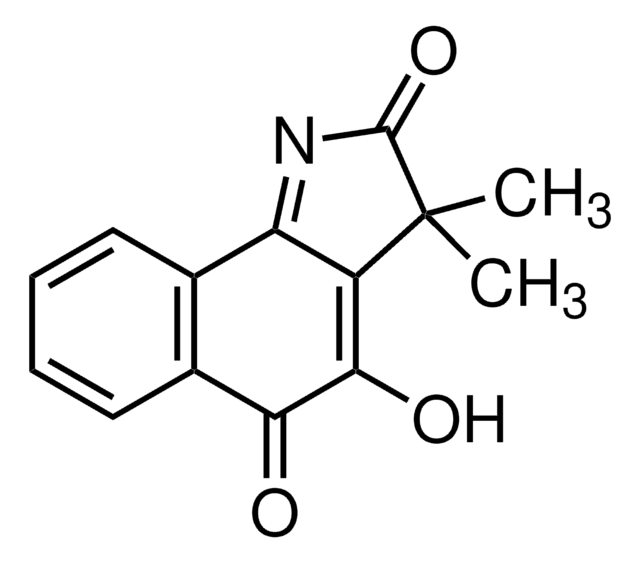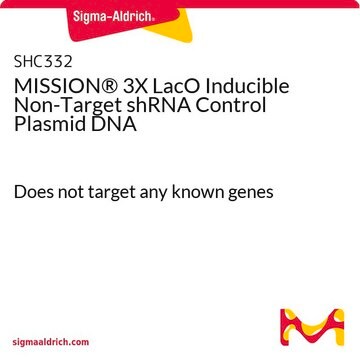R2033
RK-682
≥98% (HPLC)
Synonyme(s) :
(R)-3-Hexadecanoyl-5-hydroxymethyltetronic acid, (R)-4-Hydroxy-5-(hydroxymethyl)-3-(1-oxohexadecyl)-2(5H)-furanone
About This Item
Produits recommandés
Pureté
≥98% (HPLC)
Forme
powder
Couleur
white to tan
Solubilité
DMSO, heptane and xylene: ≥8 mg/mL
Température de stockage
−20°C
Chaîne SMILES
CCCCCCCCCCCCCCCC(=O)C1=C(O)[C@@H](CO)OC1=O
InChI
1S/C21H36O5/c1-2-3-4-5-6-7-8-9-10-11-12-13-14-15-17(23)19-20(24)18(16-22)26-21(19)25/h18,22,24H,2-16H2,1H3/t18-/m1/s1
Clé InChI
KZTSLHQKWLYYAC-GOSISDBHSA-N
Application
- as a positive control in high-performance liquid chromatography (HPLC)
- as a reference compound in high-performance liqiud chromatography (HPLC)
- as a pan-protein tyrosine phosphatase non-receptor type (PTPN) inhibitor to study its effects on the activated lymphocytes
Actions biochimiques/physiologiques
Caractéristiques et avantages
Code de la classe de stockage
11 - Combustible Solids
Classe de danger pour l'eau (WGK)
WGK 3
Point d'éclair (°F)
Not applicable
Point d'éclair (°C)
Not applicable
Certificats d'analyse (COA)
Recherchez un Certificats d'analyse (COA) en saisissant le numéro de lot du produit. Les numéros de lot figurent sur l'étiquette du produit après les mots "Lot" ou "Batch".
Déjà en possession de ce produit ?
Retrouvez la documentation relative aux produits que vous avez récemment achetés dans la Bibliothèque de documents.
Articles
Protein tyrosine phosphatases' catalytic mechanism involves transient phosphorylation.
Notre équipe de scientifiques dispose d'une expérience dans tous les secteurs de la recherche, notamment en sciences de la vie, science des matériaux, synthèse chimique, chromatographie, analyse et dans de nombreux autres domaines..
Contacter notre Service technique







